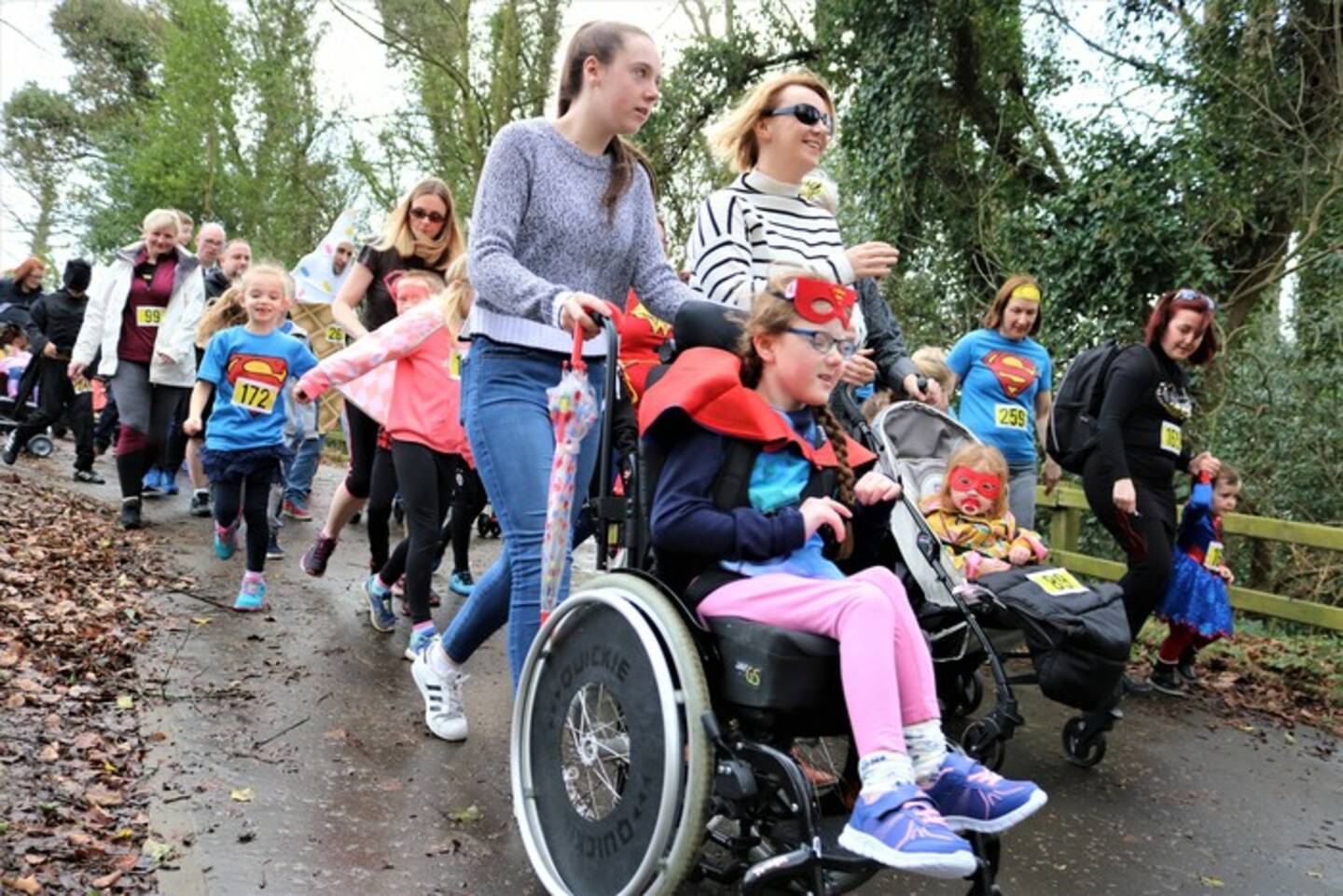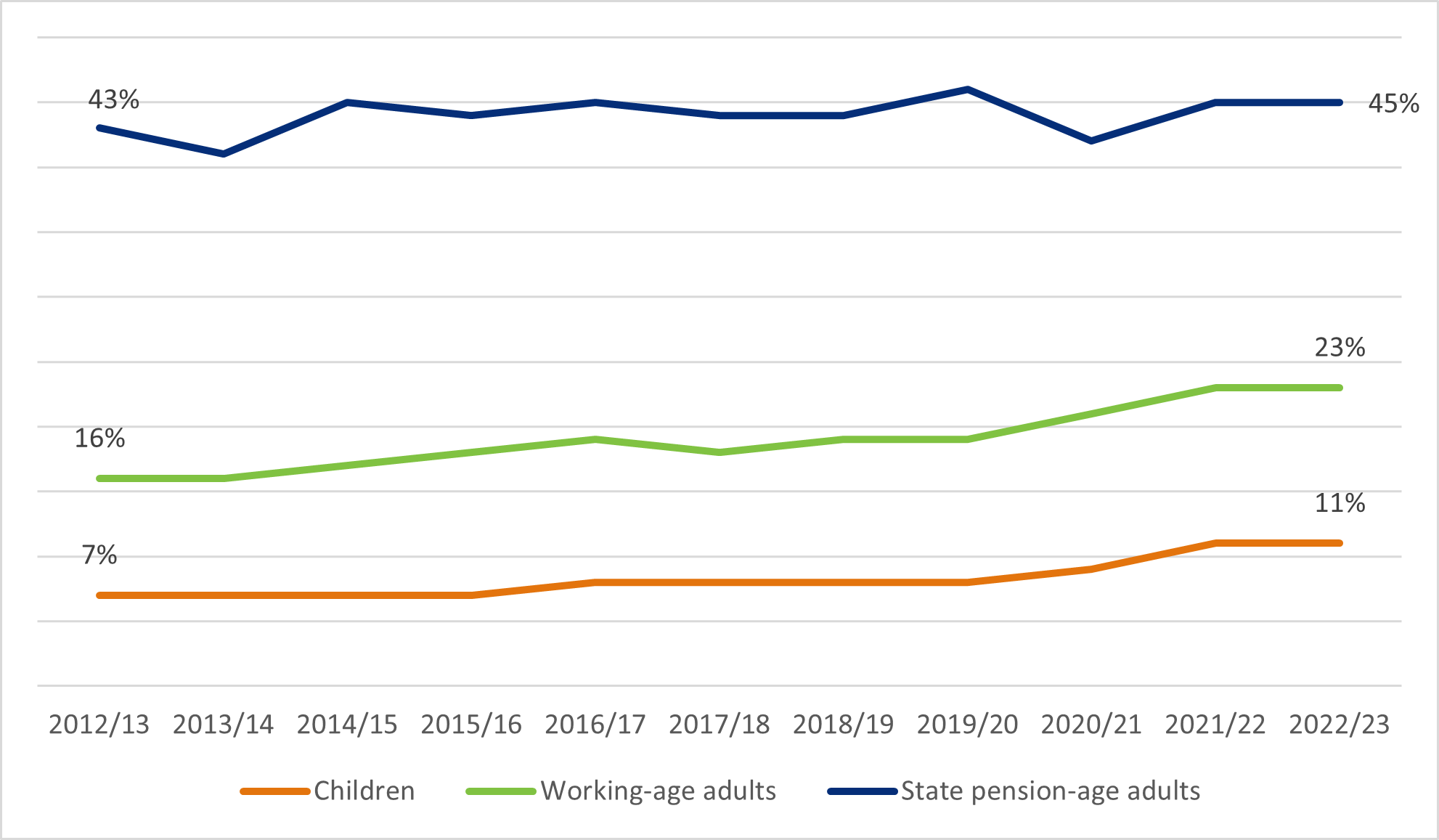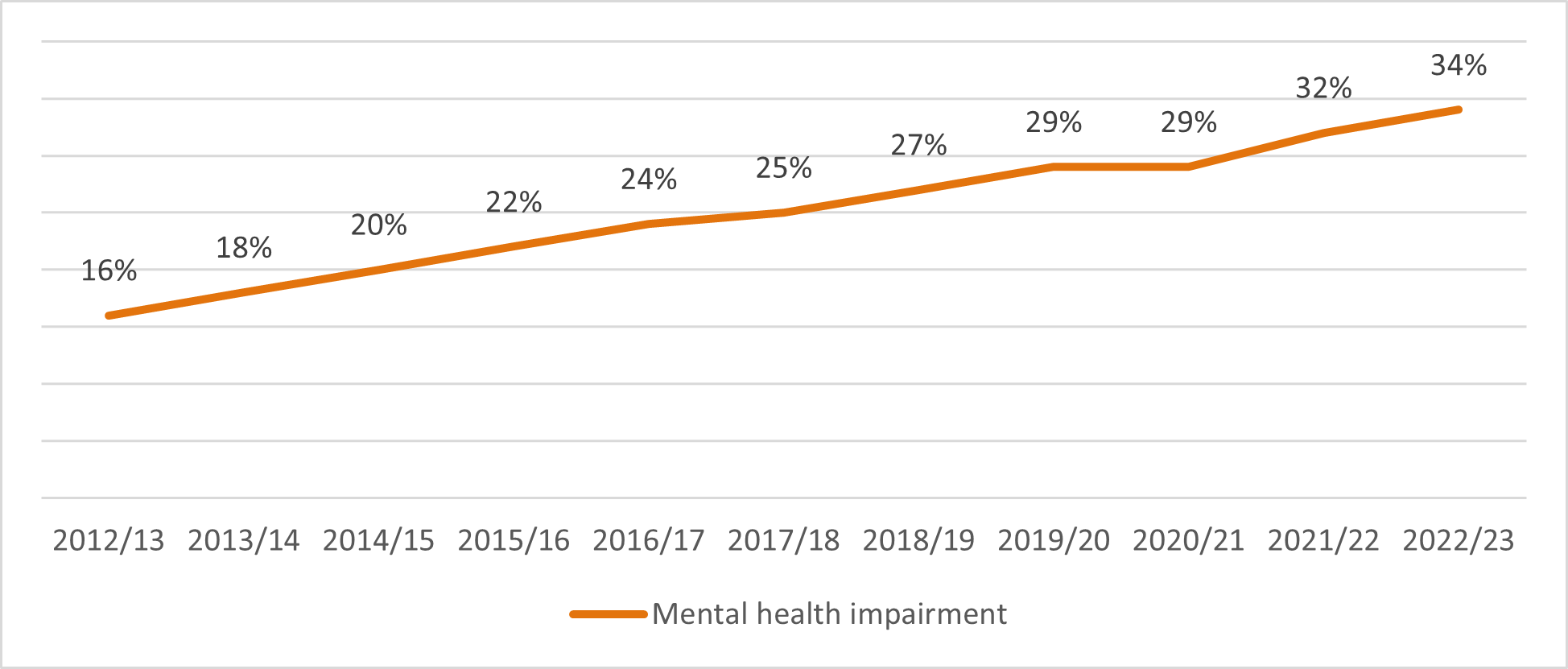Number of disabled people in UK increasing over time
A survey released by the Department for Work and Pensions has today shown that the number of disabled people in the UK is increasing over time.

The Family Resources Survey is an annual report that provides facts and figures about the incomes and living circumstances of households and families in the UK.
The latest release shows that nearly one in four (24%) of the total population are classified as disabled. That represents an increase of 3.9 million people over the past decade.
There has been an increase of four percentage points for disabled children (11%), seven percentage points for disabled adults (23%), and two percentage points for state pension-age disabled adults (45%) since 2012 to 2013 (Graph 1).
This increase has been across both males and females, with 26% of females (8.8 million) and 22% of males (7.2 million) now classed as disabled.
Percentage of disabled children, disabled working-age adults, and disabled state pension-age adults since 2012 - 2013

Commenting on the latest findings Annabel Carter, Activity Alliance Research and Insight Manager, said:
"This trend highlights the importance of recognising the impact of an ageing population. The prevalence of disability is rising over time and is likely to continue. By acknowledging and responding to these demographic shifts, it’s more important than ever that society creates and embeds more inclusive environments for everyone."
Typically, the largest impairment groups in the UK are people with a mobility impairment (48%). Mental health impairments have increased over time, with 16% in 2012 to 2013, to 34% in 2022 to 2023 (Graph 2). This is a rise from 1.9 million people to 5.4 million people.
Percentage of disabled people with a mental health impairment from 2012 – 2013 to 2022 – 2023

For working-age adults, mental health impairment (47%) is now the most prevalent impairment followed by mobility (41%). For children, social/behavioural is the most prevalent (32%) and for state pension-age adults, mobility is the most prevalent (69%).
The Family Resources Survey (FRS) is a continuous household survey which collects information on a representative sample of private households in the United Kingdom. These annual publications provide statistics and commentary on a range of topics including income, disability, household food security and childcare.
You can read the full survey on gov.uk.
Photo credit: Disability Sport NI